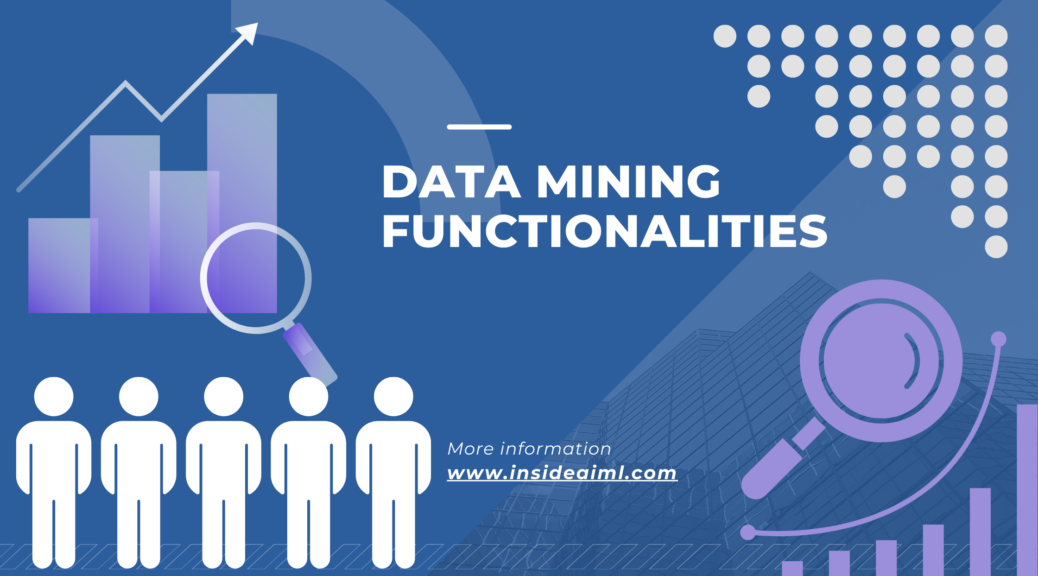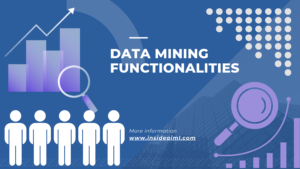
Where Can Data Mining Functionalities Be Used?
In this article, I will do my best to describe some of the data mining features that are necessary for the data mining process in any iteration. I hope you find this article helpful.
Therefore, before we get too deeply into the particulars of the data mining functionalities, let’s take a step back. First things first, let’s make an effort to define exactly what it is that we mean when we talk about “data mining.”
Data mining projects, meanwhile, can be categorized as:
Descriptive data mining’s purpose is to let you see your data without bias. Statistics, sums, and other related data are grouped together in this set.
Data prediction enables developers to construct attributes without explicitly naming them. Data mining can be used to make predictions about a company’s KPIs by identifying a linear trend in the data. A doctor can provide an accurate diagnosis and prognosis based on the patient’s symptoms and the results of a physical exam.
Features used in data mining might be seen as symbols for deeper, more hidden patterns. Data mining is useful for both descriptive and prescriptive analyses of data. Data in a database can be characterized through descriptive mining activities, while future events can be inferred through predictive mining operations.
Data mining is used in many different fields. It can be used to describe your data and draw conclusions. The primary goal of Data Mining Features is, however, to monitor developments in data mining methods. Data mining’s many benefits multiply when the process is carried out scientifically and methodically.
Definitions, Types, and Categories
A particular body of knowledge is required in order to define a category or concept. In one grouping, we have the actual, tangibly present items that can be bought in a shop, while in another, we have the more conceptual representation of the several ways that data might be arranged.
One of these ideas helps to classify things, while the other emphasizes the differences.
The process of generating detailed rules for recognizing a target class from a generic description of those features and qualities is referred to as “data characterization,” and the word “data characterization” is used to represent that process. The statistical approach known as attribute-oriented induction is the kind of data collection that exemplifies this form of data collection the best.
Discovering Commonalities
Data mining’s primary goal is pattern discovery. These occurrences in the data are what we call “frequent patterns.” The spectrum of audible frequencies represented in the collection is extensive.
Examples of common item sets include milk and sugar due to their frequent pairing in grocery shopping.
Trees and graphs are common examples of substructures that can be combined with a collection or sequence of items.
Association Analysis
Analyzes the interconnections inside a financial data set. Due to its widespread application, the term “market basket analysis” has another name in the retail sector. The rules of association are established based on the following criteria:
The information it provides reveals the most frequently viewed parts of the database.
The Fourth Key Difference
The process of categorizing data into groups according to your requirements is called classification in the field of data mining. It does this by employing strategies like as if-then, decision trees, and neural networks to generate forecasts on a class or, more generally speaking, a collection of elements.
Forecasting
It can be used as a basis for forecasting things like future expenses and volumes. The characteristics of an object can be inferred from the values of its class attributes or object attributes. Predicting future numerical values or identifying temporal patterns could be necessary for the work at hand. Data mining’s foundations lie in making predictions, both quantitative and qualitative.
Using a linear regression model built on previous economic data, we can generate credible forecasts for the future of the economy.
Strategies for Clustering
Numerous fields, including image processing, pattern recognition, and bioinformatics, employ the data mining approach of clustering. It’s like trying to categorize something, but you get to decide what the classifications are. The data’s attributes have a class-based meaning. Without labeling them in any particular way, similar datasets are clustered together. Clustering algorithms categorize data by forming groups of records that have similar features.
Analysis of Distinct Cases
To further understand the validity of the data, an outlier analysis can be applied. You can’t trust the data or try to find trends because of all the outliers. An outlier analysis is performed to see if unusual data points indicate a problem that needs correcting. Outlier analysis cannot be performed on the data provided by the algorithms.
Conclusion
Collecting data aids in making educated choices. Over time, the way it functions will improve. Data mining functionalities specify the kind of patterns that can be discovered by data scientists. Data collection has only just begun. Data mining refers to the process of discovering meaningful connections and patterns in large data collections.
